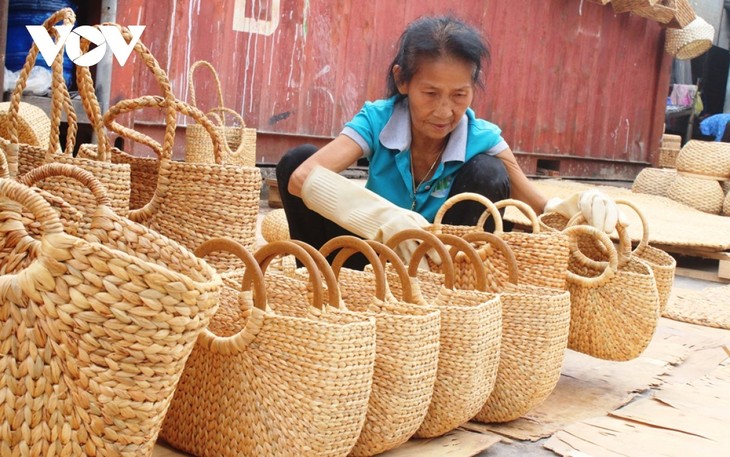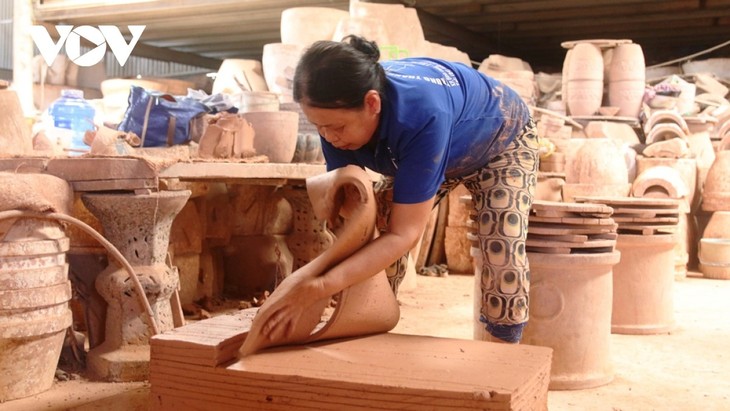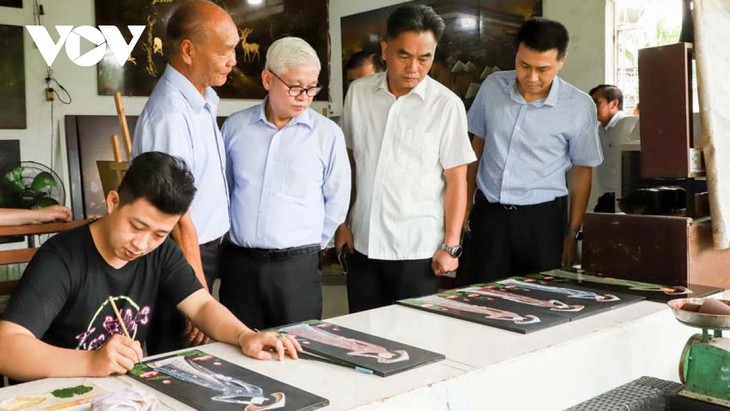(VOVWORLD) - Binh Duong province is home to 32 traditional craft villages, several of which have been recognized as a national intangible cultural heritage. In the face of market economy’s strong impacts, policies have been in place to preserve and develop these craft villages and support local businesses and artisans.
 Binh Duong province has a long history of rattan weaving. (Photo: Thien Ly) Binh Duong province has a long history of rattan weaving. (Photo: Thien Ly) |
Binh Duong’s craft villages practice nine traditional trades, including pottery, lacquerware, and wood carving. The lacquer craft was accredited as a national intangible heritage in 2016. A year later, Binh Duong launched a project to preserve and develop Tương Bình Hiệp lacquer village in combination with tourism.
Nguyen Van Quy, Deputy Chairman of the provincial Lacquer Association, said, “After the project was announced, in addition to trade promotion programs and business activities, a training program was deployed. We invited artisans to join the program to pass on their skills to the younger generation.”
 Binh Duong pottery products are well-known for their distinctive features, from the designs to the glaze quality. (Photo: Thien Ly) Binh Duong pottery products are well-known for their distinctive features, from the designs to the glaze quality. (Photo: Thien Ly) |
Binh Duong is renowned for pottery and ceramics. Minh Long, Cuong Phat, and Phuoc Du Long pottery products have been exported to countries worldwide. But the ceramics and pottery workshops in Binh Duong are having problems getting new orders because of conflicts, pandemics, and economic turmoil around the world.
Nguyen Tien Thanh, Chairman of the Binh Duong Ceramics Association, said that, because most ceramics and pottery workshops are family-run, they lack the capital to build new production facilities. Their skilled workers are settled near their current location, making it difficult for them to relocate to a new factory somewhere else. Support policies are required, according to Thanh.
“We hope there will be planning for one or two industrial clusters, which should be located in a place with convenient transportation, not too far from the old production site, so we can persuade our skilled workers to move to the new production area. Once the new production site is stable, operations at the old site can be phased out,” Thanh added.
 Binh Duong leaders conduct a survey of a local craft village to find solutions to difficulties. (Photo: Thien Ly) Binh Duong leaders conduct a survey of a local craft village to find solutions to difficulties. (Photo: Thien Ly) |
Binh Duong is waiving tuition fees for students studying lacquer and sculpture at the province’s Fine Arts and Culture Junior College. Vocational schools will connect with production facilities to provide on-demand training.
Ho Truc Thanh, Deputy Director of the provincial Department of Agriculture and Environment, said, “The department has advised the People's Committee on mechanisms and policies to encourage artisans to participate in Binh Duong’s vocational training programs.”
The provincial authority has asked agencies to propose special mechanisms in addition to the central government's incentives to financially help traditional craft villages and practitioners to boost production. Nguyen Van Danh, Chairman of the Binh Duong branch of the Vietnam Fatherland Front, said, “Binh Duong must plan its development space in a way that preserves traditional craft villages while modernizing them and applying new technologies, toward making traditional crafts an economic sector linked to tourism development.”